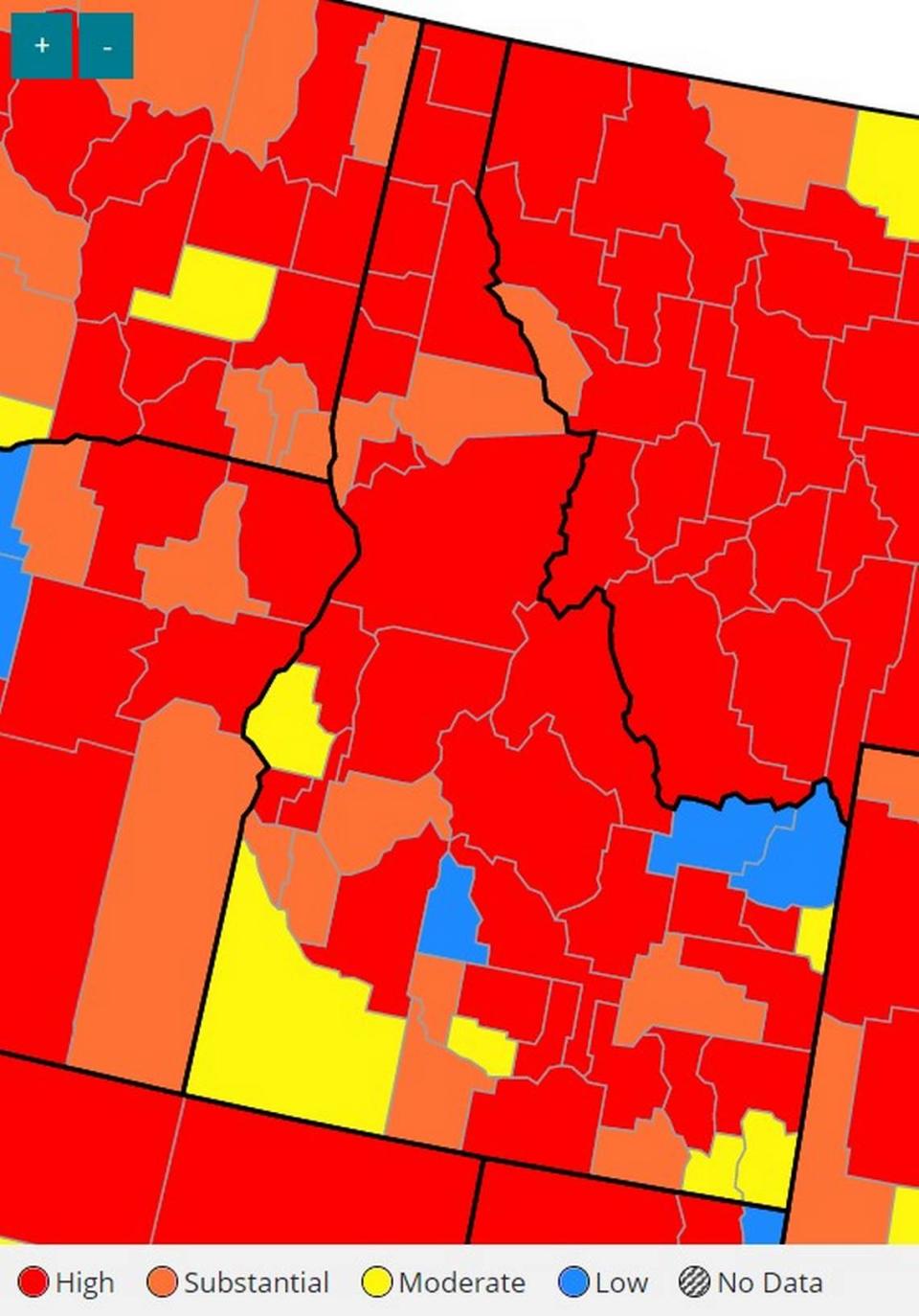Boise thinks COVID-19 is now ‘endemic.’ One Idaho doctor calls that ‘nonsense’
With COVID-19 case levels in the Treasure Valley at some of their lowest levels in months, Boise has cut back on COVID-19 requirements, as residents and city officials have moved toward a degree of normalcy not seen since before the pandemic.
But cases could tick up again this winter, with public health experts warning of fall and winter case surges. And a local public health leader cautions that COVID-19 is still dangerous — and still a pandemic.
At a Monday meeting with the North End Neighborhood Association, Boise Mayor Lauren McLean told residents that the city has ended a vaccine requirement for new employees, which had gone into effect early this year.

“Today we announced, because on Friday we moved to green status, that we’re looking at COVID now from an endemic perspective, and vaccines are no longer required for new employees,” McLean said.
Endemic diseases are ones that have predictable, baseline levels in a community, according to the Centers for Disease Control and Prevention. Hepatitis C is an example of an endemic disease.
The CDC measures COVID-19 community risk levels, using metrics to assess the risk that local hospitals will become overwhelmed. Earlier this year, the CDC shifted from measuring transmission risk to the new format, which includes transmission but also the risk to hospitals.
In the shifts, the CDC made a major change in how the risk to individuals is assessed. While community transmission levels consider a county at the highest level if there are more than 100 cases per 100,000 people over the past seven days, the new system allows up to 200 cases per 100,000 people while still remaining in the green, or lowest risk, category.

That means that the CDC’s risk levels allow for high community transmission so long as hospitals are not strained. While Ada County is in the CDC’s green status, the CDC said its transmission level is still “substantial.”
“The biggest factor to (the CDC’s risk levels) is, ‘Do we have enough hospital beds, and is our staffing available?’” Dr. David Pate, a member of Gov. Brad Little’s Coronavirus Working Group, told the Idaho Statesman by phone. “That’s not how you want to judge how the disease is doing.”
Pate, the former head of St. Luke’s Health System in Boise, noted that many countries in Europe are facing yet another surge, and that one is likely to come to Idaho again. Recent COVID-19 data from the state suggests that the data may not be “as rosy as our case numbers suggest,” he said.
Is COVID-19 endemic?
There has been national debate in recent months about when and how the COVID-19 pandemic might be recast as endemic, as many Americans have gotten vaccinated or been infected by a disease that continues to circulate. A professor and doctor at the University of Massachusetts, Jeremy Luban, said in August that this fall “may be the beginning of the real endemic phase for us.”
Important leaders have reinforced the message that the pandemic is waning. In September, the head of the World Health Organization said the end of the pandemic was “in sight.” President Joe Biden said “the pandemic is over” in a television interview, surprising his own aides at a time when around 400 Americans still die each day from COVID-19.
City and state leaders around the country have also loosened remaining restrictions in recent months. In September, New York Mayor Eric Adams, a Democrat, dropped a vaccine mandate for private employers, citing “additional flexibility.” A requirement for city workers is still in place.
Pate called treating COVID-19 as endemic at this point “nonsense.”
If a city wants to end a vaccine requirement, it should just say that, Pate said.
“Don’t make up a ridiculous public health excuse for it,” he said. “I don’t think they know what endemic means.”
He added that, if people want to call COVID-19 something other than a pandemic, it could be labeled a “recurring epidemic,” but that calling it endemic “doesn’t make any public health sense and ... it’s not correct.”
Endemic diseases tend to be predictable, whereas it’s still not clear what the future of COVID-19 is, Pate said.

In an email, a Boise spokesperson, Maria Weeg, said the city decided to shift to treating COVID-19 as endemic because “we’ve learned a lot as an organization and now have the infrastructure in place to be able to quickly adapt as the virus does. We’re also in a very different environment now, with easy access to testing and vaccines and folks being pretty aware of their own health considerations.”
She added that some employees choose to wear masks, while others don’t, and that the city is still asking employees with symptoms not to come to work.
Earlier in the pandemic, the city was covering COVID-19 sick leave with “recovery funding.” That has since ended.
“City leadership continues to monitor local health care capacity and COVID-19 data (including wastewater and CDC community levels) and will adjust protocols when needed,” Weeg said. “Throughout the pandemic we’ve coordinated closely with the medical community. Interestingly, they did not report the strain or major impacts (hospitalizations and deaths) during the last surge.”
Could there be another surge?
Pate also noted that even if hospitalizations are down, there are still serious health consequences to getting COVID-19 for many people, known generally as “long COVID,” and which are not yet fully understood. Those consequences may still affect worker productivity, and employees who get infected could file more insurance and disability claims and increase health care costs.
And hospitalizations may well rise again.
Some new variants are showing the ability to circumvent some of the available COVID-19 medical treatments, he said, and future waves may still cause problems for the state’s health care system.
“How many times have we been in the green and then had a big surge?” he said. “It’s always amazing to me how poorly we learn from history, and here history that’s only one or two years old ... If I’m right — and I hope I’m not — we’re going to have some people in the upcoming years with big regrets.”

At Monday’s meeting, a resident told McLean that she knows people who would not apply to work for the city because they did not want to get vaccinated.
“Well please let them know that it’s no longer a requirement,” McLean said.

